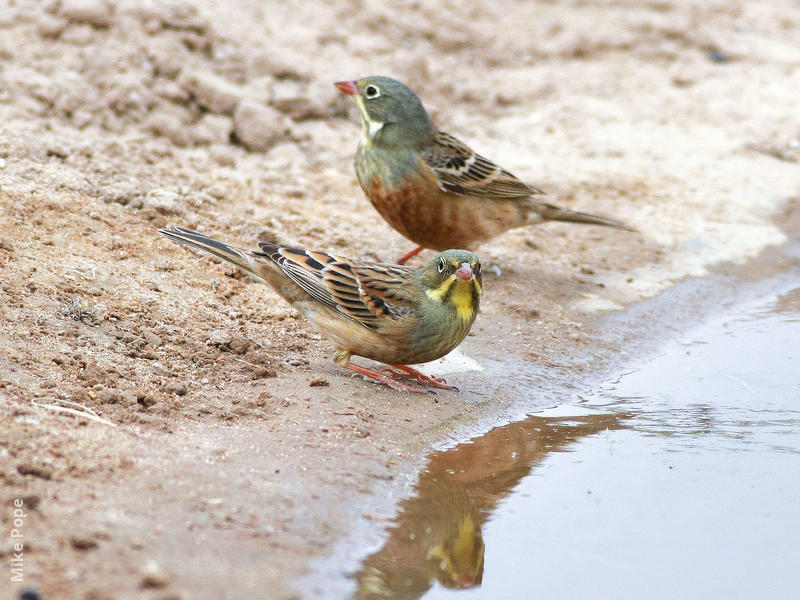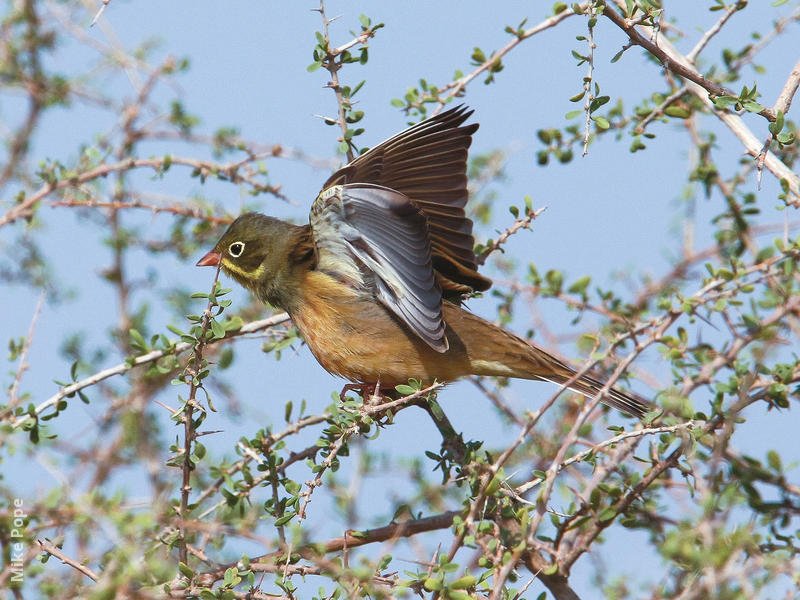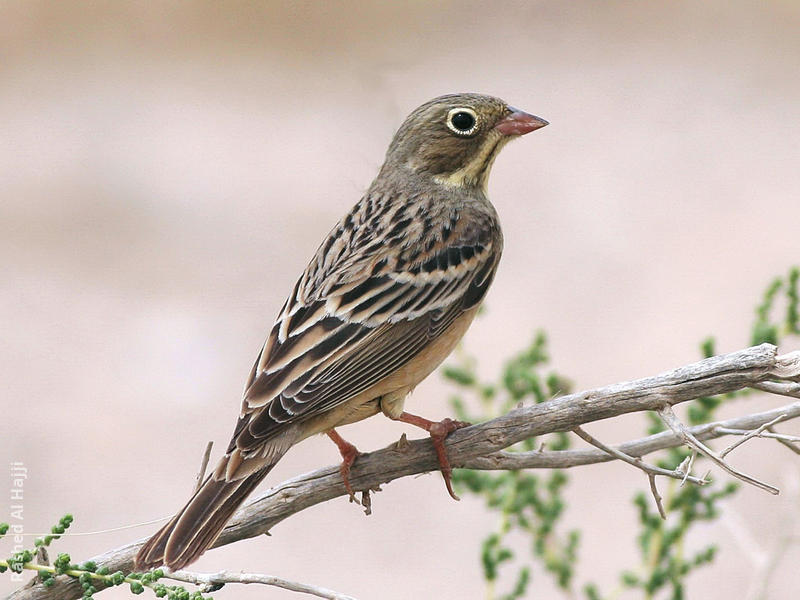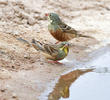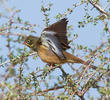- ‹ previous
- 409 of 415
- next ›
Recordings
Scientific Name
Emberiza hortulana
Arabic Name
بلبل الشعير الشائع
Kuwaiti name
زرزور جبل
Family
Information
Common passage migrant. Large numbers of these birds are frequently observed on passage in open farmland and a variety of other habitats, especially during the spring. They often migrate in groups; 500 were counted at Sulaibiya Pivot Fields in mid April 2008.
Where in Kuwait
It is generally found in dry, open desert habitats with sparse vegetation, but also in large numbers on well irrigated farmlands as well as inland pools in the Jahra area. It is found as far west as Al Abraq and south along the coast at Khiran.
In the world
It has an extremely large range with a population that is suspected to be in decline owing to ongoing habitat destruction. Its breeding range stretches from Spain to western Mongolia. It migrates to Africa, as far south as Ethiopia and Uganda, for winter. Seeds form the substantial part of the diet of this species, which it easily crushes and husks using its stout bill. Incubation of the eggs is predominantly carried out by the female while the male acts as a sentinel, protecting the nest from potential harm.
For centuries, a rite of passage for French gourmets has been the eating of the Ortolan. These tiny birds—captured alive, force-fed, then drowned in Armagnac—were roasted whole and eaten that way, bones and all, while the diner draped his head with a linen napkin to preserve the precious aromas and, some believe, to hide from God.
In 1975, food critic Craig Claiborne made a winning $300 bid in an auction for a dinner for two, courtesy of American Express, at any restaurant in the world that takes its credit card. Claiborne selected Chez Denis in Paris for a $4000 meal[8] that included a course of Ortolans.
Local threats
Indiscriminate shooting and trapping during migration.


